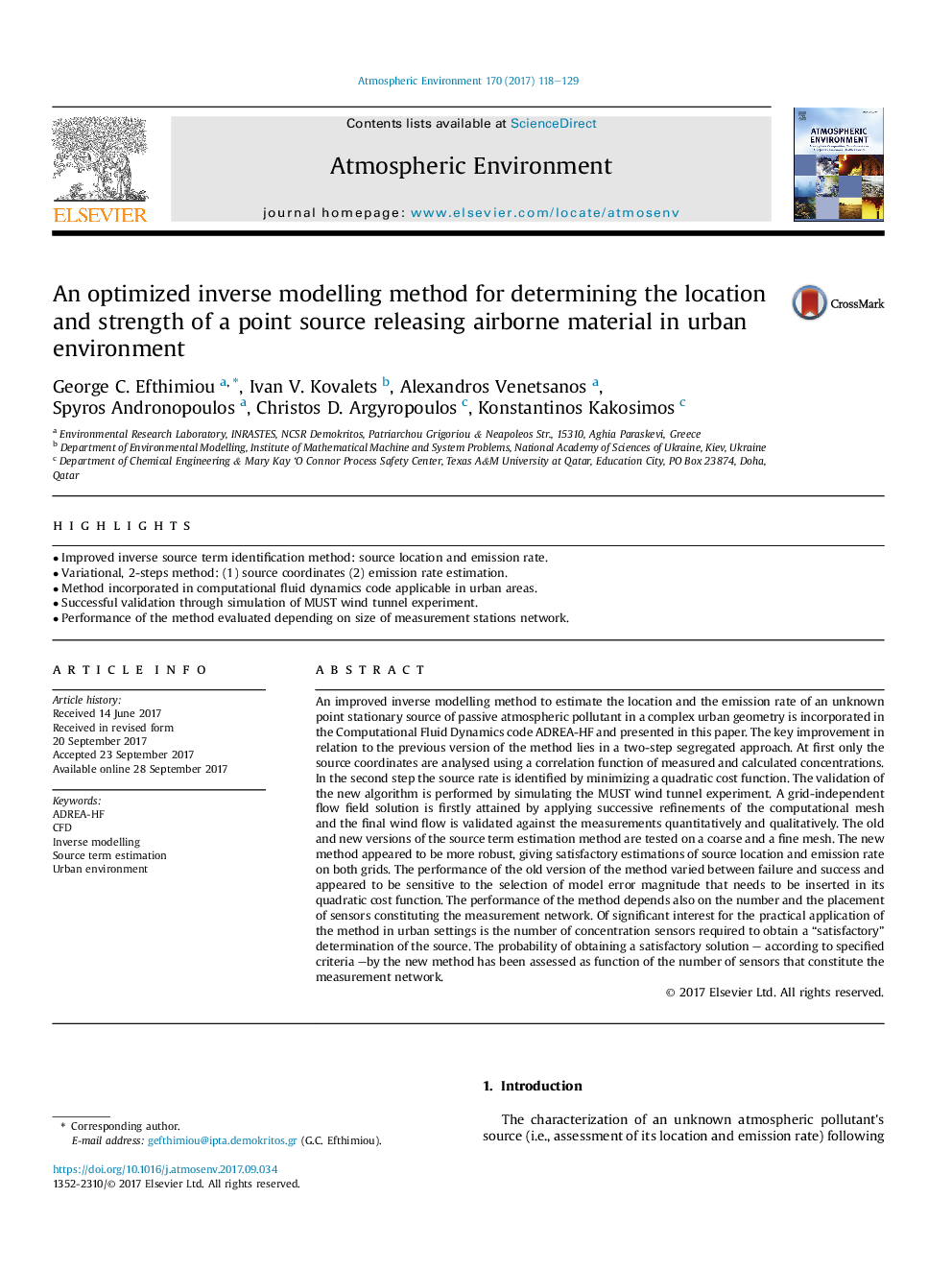| کد مقاله | کد نشریه | سال انتشار | مقاله انگلیسی | نسخه تمام متن |
|---|---|---|---|---|
| 5752948 | 1620304 | 2017 | 12 صفحه PDF | دانلود رایگان |
عنوان انگلیسی مقاله ISI
An optimized inverse modelling method for determining the location and strength of a point source releasing airborne material in urban environment
ترجمه فارسی عنوان
یک روش مدل سازی معکوس بهینه برای تعیین محل و قدرت یک منبع نقطه ای که مواد هوادهی را در محیط شهری آزاد می کند
دانلود مقاله + سفارش ترجمه
دانلود مقاله ISI انگلیسی
رایگان برای ایرانیان
کلمات کلیدی
موضوعات مرتبط
مهندسی و علوم پایه
علوم زمین و سیارات
علم هواشناسی
چکیده انگلیسی
An improved inverse modelling method to estimate the location and the emission rate of an unknown point stationary source of passive atmospheric pollutant in a complex urban geometry is incorporated in the Computational Fluid Dynamics code ADREA-HF and presented in this paper. The key improvement in relation to the previous version of the method lies in a two-step segregated approach. At first only the source coordinates are analysed using a correlation function of measured and calculated concentrations. In the second step the source rate is identified by minimizing a quadratic cost function. The validation of the new algorithm is performed by simulating the MUST wind tunnel experiment. A grid-independent flow field solution is firstly attained by applying successive refinements of the computational mesh and the final wind flow is validated against the measurements quantitatively and qualitatively. The old and new versions of the source term estimation method are tested on a coarse and a fine mesh. The new method appeared to be more robust, giving satisfactory estimations of source location and emission rate on both grids. The performance of the old version of the method varied between failure and success and appeared to be sensitive to the selection of model error magnitude that needs to be inserted in its quadratic cost function. The performance of the method depends also on the number and the placement of sensors constituting the measurement network. Of significant interest for the practical application of the method in urban settings is the number of concentration sensors required to obtain a “satisfactory” determination of the source. The probability of obtaining a satisfactory solution - according to specified criteria -by the new method has been assessed as function of the number of sensors that constitute the measurement network.
ناشر
Database: Elsevier - ScienceDirect (ساینس دایرکت)
Journal: Atmospheric Environment - Volume 170, December 2017, Pages 118-129
Journal: Atmospheric Environment - Volume 170, December 2017, Pages 118-129
نویسندگان
George C. Efthimiou, Ivan V. Kovalets, Alexandros Venetsanos, Spyros Andronopoulos, Christos D. Argyropoulos, Konstantinos Kakosimos,
